eNews: Volume 20, Number 1 (May 2022)
Volume 20, Number 1 (May 2022)
From the Director’s Desk
John Howard, M.D. Director, NIOSH
Reducing Hazardous Exposures in Dental Clinics
Dentistry is not usually considered a high-risk job. However, workers in the dental field are among those with the highest occupational risk for exposure to SARS-CoV-2, the virus that causes COVID-19. Dental personnel often work closely with patients who remove their masks for procedures. These dental procedures can produce aerosols, or sprays of liquid, from a patient’s mouth, which could expose nearby workers.
Those working in dental settings, including dental clinics and laboratories, can also face other types of exposures. Some dental personnel can perform tasks that potentially generate dusts linked to lung diseases such as pneumoconiosis and pulmonary fibrosis. A 2018 MMWR by NIOSH authors and others reported a cluster of idiopathic pulmonary fibrosis (IPF) among dental staff. IPF is a lung disease where the lungs become scarred for an unknown reason. Although no clear connection between IPF and occupational exposures was identified in this study, the cluster of IPF observed among dental personnel indicated a need to learn more about what exposures may be contributing to IPF in these workers. Both the increased risk for COVID-19 exposure and the IPF cases heighten the importance of reducing potentially hazardous exposures in dental settings.
One way of reducing hazardous exposures in dental settings is to reduce potential exposures to harmful aerosols by using engineering controls such as “source controls.” Source controls directly capture and remove aerosols before they can enter the air and be inhaled by nearby workers. In dental settings, dental evacuation systems (suction devices designed to remove fluids during treatment) can work as source controls by capturing aerosols at a patient’s mouth. However, the efficiency of different commercially available systems varies, and their effectiveness as source controls has not been extensively studied.
To work on this issue, NIOSH partnered with the West Virginia University’s School of Dentistry to learn more about the efficiency of dental evacuation systems. NIOSH recently completed a study on four such systems during simulated dental procedures. Another ongoing study is evaluating five dental evacuation systems during routine clinical procedures with patients. Results of both studies will improve our understanding of how well these systems work as aerosol exposure controls. They will also help dental clinics decide which engineering controls might best suit the needs of their practice or clinic.
Another project NIOSH researchers are working on aims to characterize ventilation systems and evaluate exposures that could possibly contribute to occupational lung disease in dental practices. They plan to conduct field studies at 30 dental clinics across different specialties and settings. Results from this project will further our understanding of ventilation designs in dental settings. It will also provide data about potentially hazardous task-specific and job-specific exposures, informing recommendations for exposure controls.
To learn more about these studies, or possibly participate in one, dental staff are encouraged to contact NIOSH. For more information, you can contact Dr. Brie Blackley at BBlackley@cdc.gov.
Inside NIOSH:
Firefighters can be Exposed to Compounds Through the Skin
Firefighters can be exposed to harmful compounds through skin absorption, even when they wear personal protective equipment (PPE), according to research published in the International Journal of Hygiene and Environmental Health.
When materials burn, they can release compounds, such as benzene, toluene, and naphthalene. Of these, benzene is known to cause cancer. While respiratory protection is designed to protect firefighters from breathing in compounds, firefighters can be exposed to these substances through the skin.
To study this issue, a structure was set up to train firefighters with a separate “burn” chamber where a sofa was set on fire to create smoky conditions. Study participants performed firefighting activities in the structure wearing various types of PPE, including new and laundered gear. Twenty-four firefighters participated in the study. Researchers measured levels of three compounds released in the air during fires: benzene, toluene, and naphthalene. Researchers also measured concentrations of these compounds under the firefighters’ PPE (jackets) and in their exhaled breath.
Benzene concentrations were nearly the same inside and outside of the jackets. Naphthalene and toluene concentrations were lower inside compared with outside the jackets, but these compounds still entered through PPE. Concentrations of benzene in firefighters’ exhalations increased from pre- to post-fire, even though the firefighters wore self-contained breathing apparatus (SCBA). Using SCBA should have prevented the firefighters from inhaling airborne compounds, but benzene and other compounds that get underneath their gear may be absorbed through the skin, enter the bloodstream, and then be measured in exhaled breath.
This study suggests that firefighter PPE will not protect firefighters’ skin from these three compounds. A proportion of these compounds may then be absorbed through skin. These findings help inform efforts to prevent exposures to these and other harmful compounds during firefighting.
More information is available: NIOSH | Firefighter Resources
Outside NIOSH:
Gaps Identified in Workplace Resources for Opioid Use Disorder
In the first half of 2020, about 90% of all overdose deaths in Maryland involved opioids. The same year, the Maryland Department of Health, where NIOSH supports an Occupational Safety and Health Surveillance Program, launched a study exploring the effects of opioids on employment within Maryland. The project, called Workplace PROSPER (Partnering to Reduce Opioid Stigma and Promote Employment in Recovery), aims to develop a toolkit of work-related recovery resources. The study recently appeared in New Solutions: A Journal of Environmental and Occupational Health Policy.
Eighty-six experts participated in information-gathering sessions and identified resources in eight key areas to include within the Maryland Workplace PROSPER toolkit. These areas included 1) supervisors and managers, 2) hiring, 3) recovery supports at work, 4) retention, 5) culture change, 6) medical system interactions, 7) tangible human resource policies, and 8) families. The researchers then compared resources in these areas to toolkits developed by seven other states and organizations to identify existing resources and potential gaps.
Although many of the resources were available in preexisting toolkits, several gaps emerged. For example, tools to support physicians when discussing opioid use disorder and workplace issues with their patients were lacking. Also absent were resources to support family members and model programs for hiring people in recovery. Next, the researchers plan to conduct surveys among employers and adults in recovery to further inform development of the toolkit.
More Information is available:
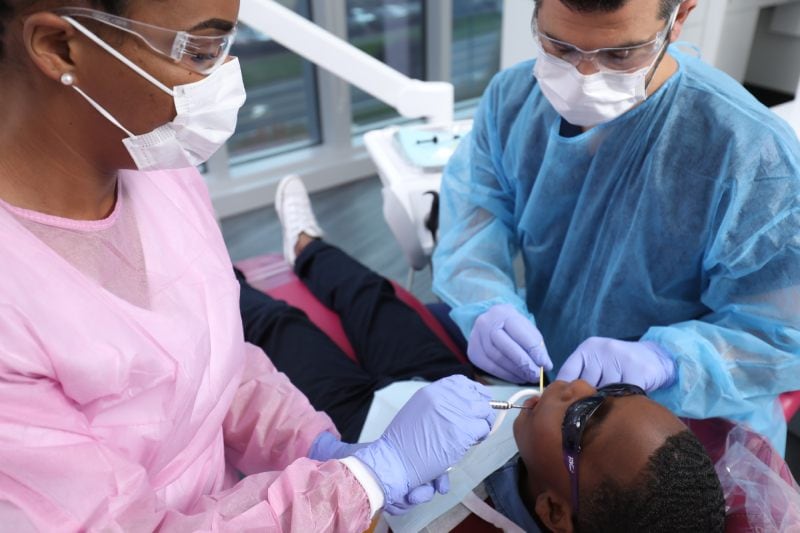
Photo courtesy of CDC
Director’s Desk
Research Rounds
- Inside NIOSH: Firefighters can be Exposed to Compounds Through the Skin
- Outside NIOSH: Gaps Identified in Workplace Resources for Opioid Use Disorder
Highlights
- Workers Memorial Day 2022: Statement by NIOSH Director Dr. John Howard
- In Memoriam: Former HELD Director Dr. Al Munson
- 2022 NIOSH Science and Service Awards Presented at Annual Event
- NIOSH Seeks Lead for Field Studies Branch
- Join the NIOSH Protective Clothing Challenge—Leaving No Body Unprotected
- National Heat Safety Week 2022
- CDC Researchers Identify New Occupational Disease Among Metalworkers
- How to Choose the Right Fatigue Detection Technology for Your Workplace
- Recordings Available of Occupational Exoskeletons Webinars
- New Strategic Foresight Webpage
- Updated Webpage for Trenching and Excavation
- NIOSH & OSHA Renew Partnership Agreement
Monthly Features
John Howard, M.D., Director
Christina Spring, Editor in Chief
Managing Editor
Tanya Headley
Section Editor
Anne Blank, Research Rounds
Kiana Harper, Highlights & Monthly Features
Contributing Editors
Sarah Mitchell
Donjanea Williams
Copy Editor
Cheryl Hamilton
Technical Support
Steve Leonard, Technical Lead
Matt Osborne, Web Developer
To receive the NIOSH eNews email newsletter, enter your email address:
Highlights
Workers Memorial Day 2022: Statement by NIOSH Director Dr. John Howard
Workers Memorial Day is observed each year on April 28. It serves as an opportunity for us to commemorate workers who were injured, became ill, or died because of exposures to occupational hazards. Read the full statement from NIOSH Director John Howard, M.D., for the 2022 Workers Memorial Day.
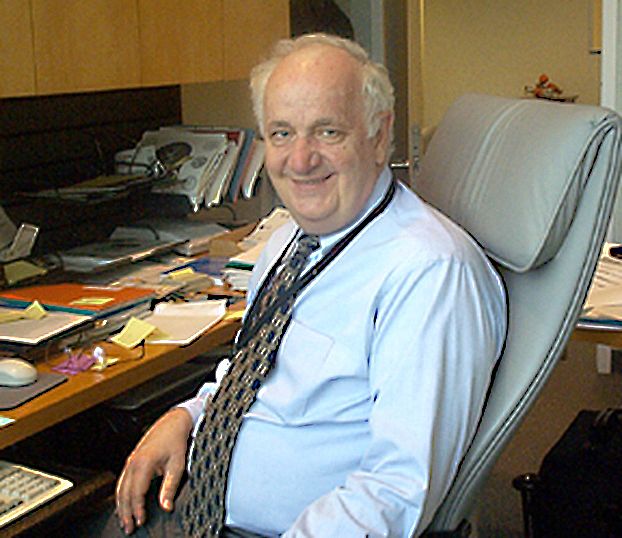
Photo by NIOSH
In Memoriam: Former HELD Director Dr. Al Munson
It is with profound sadness that we announce the recent death of former NIOSH Health Effects Laboratory Division (HELD) Director, Albert E. Munson, Ph.D. Dr. Munson joined NIOSH in 1996 from the Medical College of Virginia, Virginia Commonwealth University, where he was a Professor of Pharmacology and Toxicology. An immunotoxicology pioneer, Dr. Munson was an internationally recognized leader in Occupational Safety and Health, conducting many important studies of the effects of chemical exposures on the immune system.
Dr. Munson was the founding director of HELD, serving in this capacity for 17 years until his retirement in 2014. He was instrumental in building the new division from its early beginnings in Morgantown, West Virginia, recruiting and standing up a laboratory with over 200 new staff in a short period of time. Throughout his years of leadership, Dr. Munson consistently brought a high level of scientific excellence to NIOSH through numerous achievements in basic and applied research. Dr. Munson was also an outstanding mentor to young investigators and public health practitioners, inspiring many to pursue careers in occupational safety and health. Read his complete obituary.
2022 NIOSH Science and Service Awards Presented at Annual Event
In a virtual ceremony on April 28, NIOSH recognized researchers, staff, and partners for their significant contributions to the field of occupational safety and health. Read more about the Annual Science and Service Awards and see who was recognized this year.
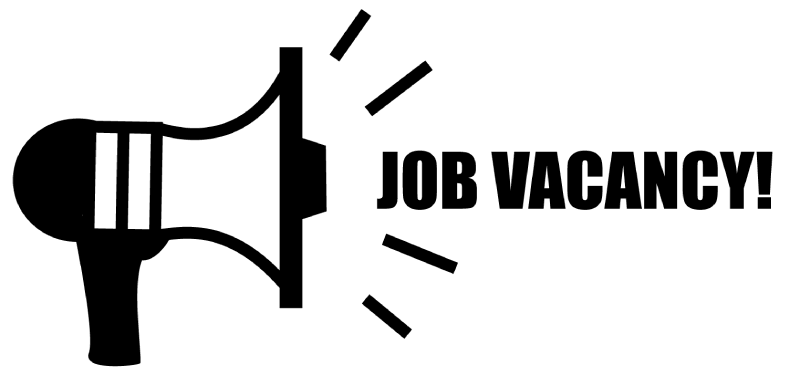
NIOSH Seeks Lead for Field Studies Branch
The NIOSH Respiratory Health Division has a job opening for the lead of its Field Studies Branch. The Field Studies Branch conducts research and field investigations pertaining to work-related respiratory health, including NIOSH Health Hazard Evaluations. For more information or to apply, see USA jobs: Supervisory Research Health Scientist (internal government candidates); or Supervisory Research Health Scientist or Supervisory Research Physician (open to the public). The last day to apply is May 9.
Join the NIOSH Protective Clothing Challenge—Leaving No Body Unprotected
NIOSH recently launched the “NIOSH Protective Clothing Challenge—Leaving No Body Unprotected” in partnership with a leading platform and open marketplace for crowdsourced solutions. The challenge seeks solutions to help provide better-fitting protective clothing for the full spectrum of U.S. workers. A total of $55,000 will be awarded to up to five teams whose innovations meet the challenge goals. For more information visit challenge.gov. The deadline to submit solutions is June 30 at 5 p.m. (ET).
National Heat Safety Week 2022
NIOSH is joining NOAA, CDC, OSHA, EPA, and FEMA for NIHHIS National Heat Safety Week 2022. Follow along on NIOSH’s Facebook, Twitter, and Instagram May 16–20 to learn more about heat-related illness and how to protect yourself as we approach the summer months.
CDC Researchers Identify New Occupational Disease Among Metalworkers
Welder’s anthrax is a rare and deadly disease. It is defined as a pneumonia in metalworkers caused by bacteria from within the B. cereus group that produces anthrax toxin. A new journal article and blog post describe this newly identified occupational disease. The article is the first to report additional information on cases, describe possible infection mechanisms, and outline prevention measures that should help prevent transmission of welder’s anthrax in the workplace.
How to Choose the Right Fatigue Detection Technology for Your Workplace
Fatigue can reduce focus, slow reaction time, and impair decision-making skills. Because fatigue has many sources, it can be hard to detect on job sites. NIOSH published an infographic and graphics to highlight different factors for employers to consider when selecting a fatigue detection technology as part of a comprehensive safety management approach.
Recordings Available of Occupational Exoskeletons Webinars
NIOSH recently released seven webinar recordings related to the prevention of work-related musculoskeletal disorders to YouTube for easier access. Although the recordings are from 2019–2021, the content is still accurate and informative. You can find the webinar list with links to each on the NIOSH Musculoskeletal Health Program: Webinars webpage.
New Strategic Foresight Webpage
NIOSH recently posted a new webpage on strategic foresight defined on that page as “a practice that looks ahead and asks what may be coming, how it might affect us, and what we can do today to start moving toward a preferred future outcome.” The webpage provides information about initiatives designed to promote awareness and capacity in foresight throughout the occupational safety and health community. For questions about this new webpage or the initiatives, contact the NIOSH Office of Research Integration.
Updated Webpage for Trenching and Excavation
NIOSH recently updated its Trenching and Excavation webpage and published an infographic to promote trench safety work practices in the construction industry. Workers should never enter a trench that does not have a protective system in place and a safe way to enter and exit. Before you dig it, plan it!
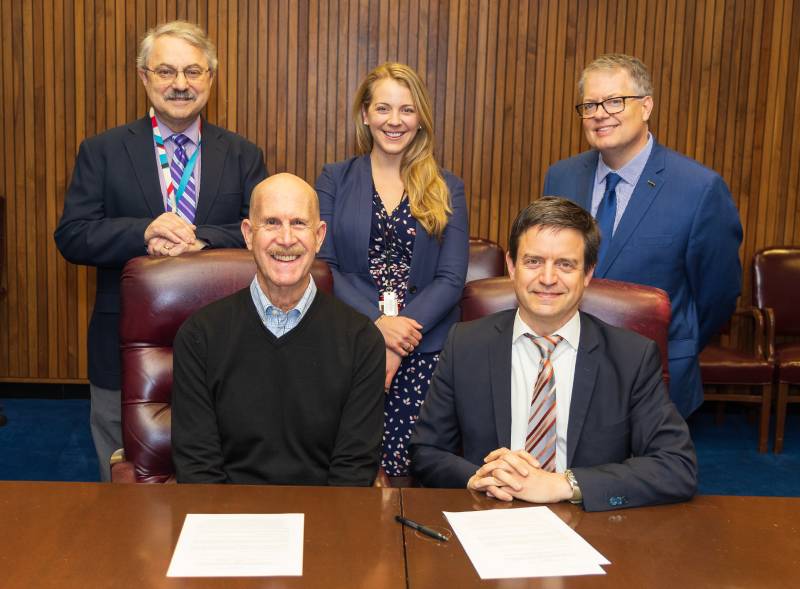
NIOSH & OSHA Renew Partnership Agreement
On April 7, NIOSH Director Dr. John Howard and Assistant Secretary of Labor Doug Parker renewed the NIOSH and OSHA partnership agreement for five years. This partnership agreement began in 2014 to foster increased collaboration between the agencies, streamlining the development of OSHA’s occupational safety and health standards. The current Memorandum of Understanding (MOU) provides for regular meetings between NIOSH and OSHA senior staff; coordinating response activities during emergencies; sharing information, data, and tools to assess occupational safety and health issues; and developing joint-publications in areas of mutual interest.
New Communication Products & Reports
FACE Reports
- Laborer Crushed Between Two Large Stone Slabs at a Manufacturing Facility—Massachusetts
- Land Clearing and Forest Product Company Owner Overcome by Carbon Monoxide in Hopper of Wood Chip Burning Boiler—Massachusetts
- Property Maintenance Worker Caught Between Industrial Sweeper and Low Ceiling—Massachusetts
Fire Fighter Fatality Investigation and Prevention Program Report
Program Performance One- Pager (PPOP)
NIOSH Science Blog
Please see the following new blogs from last month. Sign up to have notifications about new NIOSH Science Blogs delivered directly to your inbox!
- New NIEHS Resources to Prevent and Address Opioid Misuse and Promote Recovery Friendly Workplace Programs
- Noticias recientes sobre el trabajo en turnos de noche y el cáncer: ¿Qué significa para los trabajadores? (Recent News about Night Shift Work and Cancer: What Does it Mean for Workers?)
- Falls Campaign 2022: Making Research Work
- Cancer Incidence, Latency, and Survival in World Trade Center Rescue/Recovery Workers
- Welder’s Anthrax
- Racial and Ethnic Disparities in Teleworking During the COVID-19 Pandemic
- Manufacturing Monday Blog Series: Playground Equipment
- Workers Memorial Day 2022: Statement from NIOSH Director John Howard, MD
Federal Register Notice
Mine Safety and Health Research Advisory Committee (MSHRAC)
The notice was posted on April 27. The meeting will be held on May 17. The public comment session will be held on May 18.
Advisory Board on Radiation and Worker Health (ABRWH), Subcommittee on Procedures Reviews (SPR), National Institute for Occupational Safety and Health (NIOSH)
The notice was posted on April 6. Comments must be received by May 18. The meeting will be held on May 25.
Request for Information: World Trade Center Health Program
The notice was posted on April 26. Comments must be received by May 26.
Proposed Data Collection Submitted for Public Comment and Recommendations: Baseline Survey of National Education and Awareness Social Marketing Campaign: Employer Efforts to Support the Mental Health of Health Workers
The notice was posted on April 1. Comments must be received by May 31.
Proposed Data Collection Submitted for Public Comment and Recommendations: Noise Exposures and Hearing Loss in the Oil and Gas Extraction Industry
The notice was posted on April 1. Comments must be received by May 31.
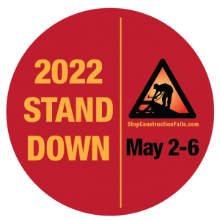
NORA
Reaching Those Placed at Higher Risk: Hispanic Construction Workers 2022 National Stand-Down
The National Occupational Research Agenda (NORA) Construction Sector Council is partnering with Alianza Americas for the National Campaign to Prevent Falls in Construction and the annual National Stand-Down, taking place May 2–6. Alianza Americas is a network of migrant-led organizations that works to create an inclusive, equitable, and sustainable way of life for immigrant communities. As a part our increased focus on health equity, we are reaching out to Spanish-speaking construction workers and employers to provide Spanish-language resources for the safety stand-downs. We encourage you to join in and spread the word! Contact Elizabeth Garza with any questions.
News from Our Partners
CDC Updates Overdose Prevention Framework
CDC recently updated the 2018 overdose prevention framework to address CDC-wide response needs for a worsening overdose crisis. The 2021 update adds additional areas focused on employers, community organizations, and the reduction of stigma. This framework emphasizes expanding access to high impact harm reduction tools like naloxone, quickly connecting more people to treatment, and making better use of data to guide drug policy and save lives with a lens focused on access for all and health equity, all major pillars of the current administration’s National Drug Control Strategy. The framework also complements the Office of the National Drug Control Policy.
OSHA’s Heat Illness Prevention Campaign
The Occupational Safety and Health Administration recently launched a National Emphasis Program to protect millions of workers from heat illness and injuries. Through the program, OSHA will conduct heat-related workplace inspections before workers suffer completely preventable injuries, illnesses or, even worse, fatalities. The agency will hold a three-part webinar series on working in extreme heat and humid working conditions starting May 10.

Upcoming Workplace Mental Health Action Summit
Registration is open for a two-hour virtual business summit, scheduled May 5 at 12 p.m. (ET). The summit will include employers presenting their own innovations to improve psychological safety at work and access to mental health benefits. Participants will receive new employer resources and communications tools. This event is co-hosted by Health Action Alliance and Mental Health Action Day, in partnership with the Ad Council, One Mind, the SHRM Foundation, and the American Psychological Association. Register today!
Brief Updates From NIOSH-Supported Centers
Updates from the Centers for Agricultural Safety and Health (Ag Centers): New Ag Center resources focused on avian influenza outbreaks:
- Highly Pathogenic Avian Influenza (HPAI) Toolkit: The Upper Midwest Agricultural Safety and Health Center recently developed a toolkit to help poultry farmers enhance HPAI prevention with biosecurity protocols, identify the signs and symptoms of HPAI in birds, and stay connected to additional resources from the U.S. Department of Agriculture and state departments of agriculture.
- Poultry Growers Facility Playbook (from the Central States Center for Agricultural Safety and Health and the University of Nebraska Medical Center Global Center for Health Security)
- Monthly Safety Blasts April News Update—Avian Flu (from the Southwest Center for Agricultural Health, Injury Prevention and Education)
- Avian Influenza (Bird Flu) Resources and FarmSafe Podcast—Avian Influenza (from the Great Plains Center for Agricultural Health)
Updates from CPWR—The Center for Construction Research and Training:
Updates from the Centers of Excellence for Total Worker Health®:
Conferences, Meetings, Webinars, & Events
This page provides a list of publicly available occupational safety and health-related conferences, meetings, webinars, and events sponsored by NIOSH as well as other government agencies, and nongovernment agencies, such as universities, professional societies, and organizations.
